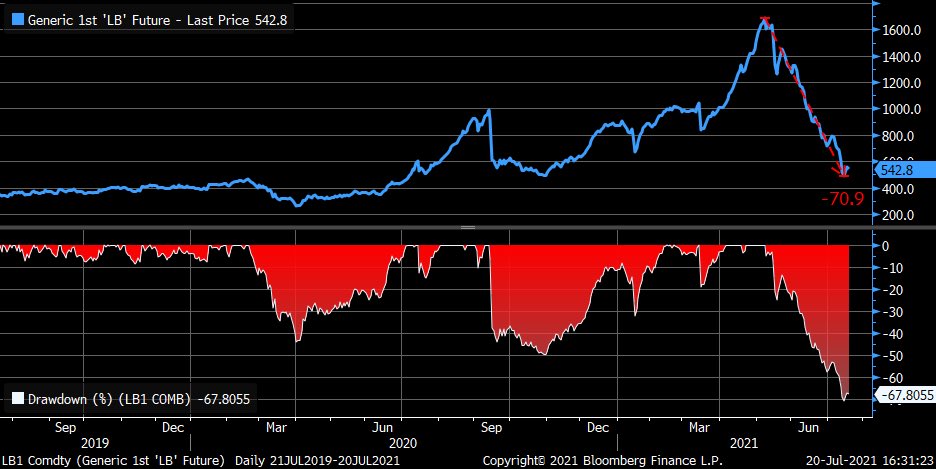Lumber Back to Pre-Pandemic levels

Source: Liz Ann Sonders, Schwab
The inflation debate seems to be conflating a variety of different elements of changing prices. There are a lot of confusing crosscurrents here. Let’s take a beat to clarify.
Inflation is a general increase in the cost of goods and services. You can also describe this as a decrease in the purchasing power of a given currency, or all currencies. (See this for a more wonky set of definitions)
I find it helpful to think of inflation coming in different flavors:
1. Long-Term Inflation An elevated annual increase in prices (e.g., CPI). This kind of inflation crimps economic growth — it forces central banks to raise rates, which impacts everything purchased with credit, from automobiles to houses to revolving charge cards. Fearing higher prices, panic buying can occur, which creates a vicious cycle of rising prices. (See, suburban housing recently). Hence, a legitimate concern over long-term inflation as something Central banks should be on guard against.
2. Long-Term Deflation The flip side is long-term deflation, where prices continually fall. If it gets too rapid, consumers anticipate lower prices, and hold off on purchases, which can constrain the economy, leading to a different spiral. (Japan has been stuck in this sort of problem for a long while, and it has proven very challenging to exit).
3. Gradual Deflation Prices can be driven lower in many ways: economies of scale (think the early flat panel TVs versus current versions); Digitalization, automation, global labor arbitrage — lots of ways for goods to find a lower price point (and ever more consumers). For more, see Gary Shilling’s 7 Varieties of Deflation. Note the style of deflation the US has been experiencing here is very different than the Japanese version.
4. Transitory inflation is when prices pop higher for a relatively short period, then the annualized rate of inflation reverts to normal levels. Lumber (chart at top) seems to have experienced this sort of inflation.
5. Price Resets Finally, there are Price Resets (for lack of a better phrase). This occurs when an entire group of goods or services experience step-level price change that suddenly is higher, and then stays elevated. The annual rate of change is the same as before, only from higher levels.
The debate these days is between the Transitory and long-term inflation camps. The Delta variant seems to have, in KPMG’s Constance Hunter’s view, “elongated” the transitory type of inflation. This might account for some of the confusion between the two.
I suspect they both should be focusing at least in part on Resets. In lots of different areas, prices sometimes “stair-step” higher over decades. It is not a gradual annualized increase, but a substantial all-at-once move that then sticks for a while (with low normal price increases).
We are seeing stair-step reset in low-end wages. I expect these catch-up wage increases to be sticky. Low-end wages have lagged inflation, productivity, corporate profits, and executive compensation for decades, and the balance of power is shifting.
Perhaps also residential real estate — suburban home prices seem to have reset higher, but these are complicated by low supply and very low rates. I cannot tell if this space is experiencing long-term or transitory inflation; perhaps it is something else entirely.
We need to recognize why prices are increasing — are these temporary supply chain issues or bottlenecks associated with reopening the economy, or is it something more pernicious? There are a lot of moving parts around inflation, and we should all avoid being too doctrinaire about it.
Previously:
Inflation
Finding it Hard to Hire? Try Raising Your Wages (May 6, 2021)
The Inflation Reset (June 1, 2021)
Wages are Table Stakes (June 10, 2021)
Deflation, Punctuated by Spasms of Inflation (June 11, 2021)
Elvis (Your Waiter) Has Left the Building (July 9, 2021)

